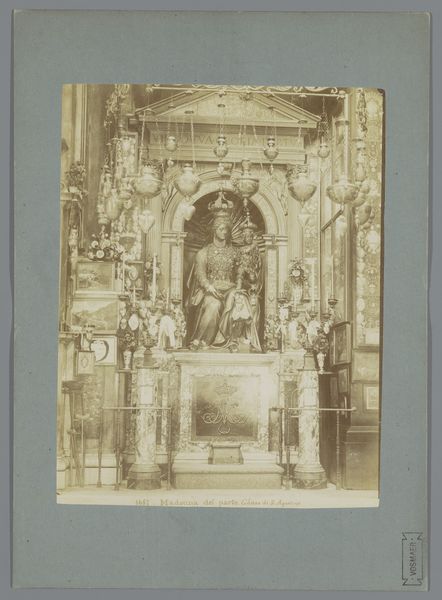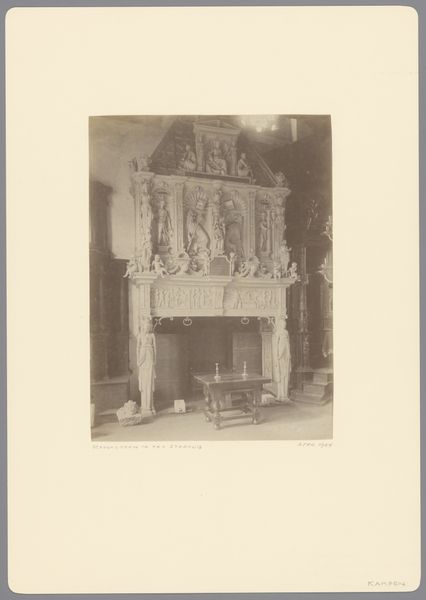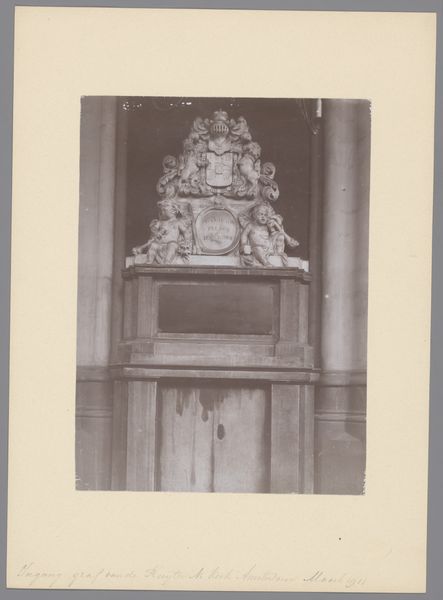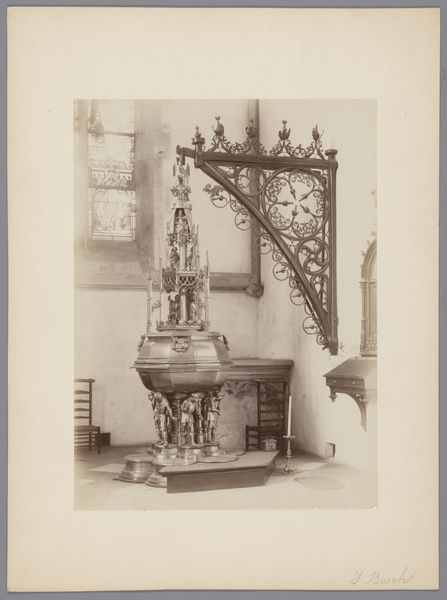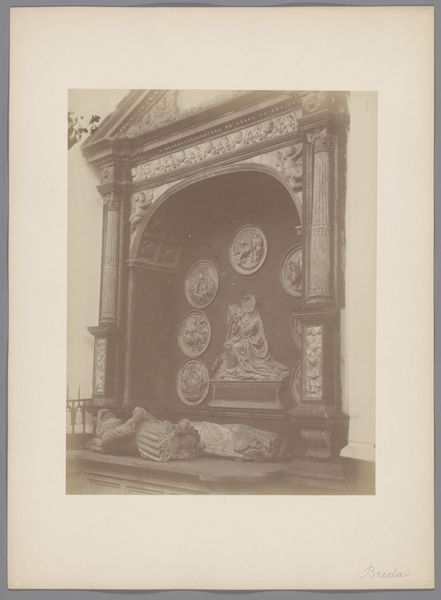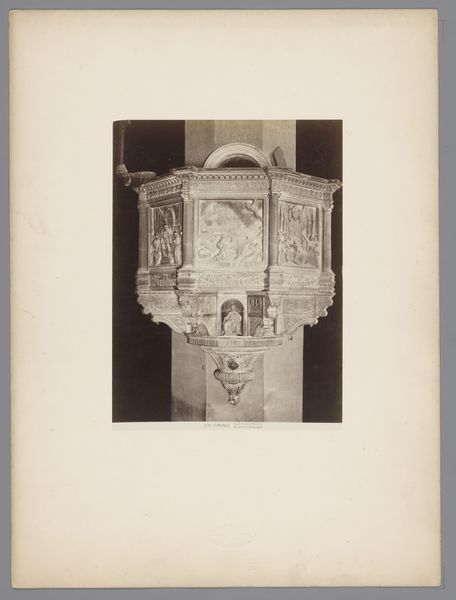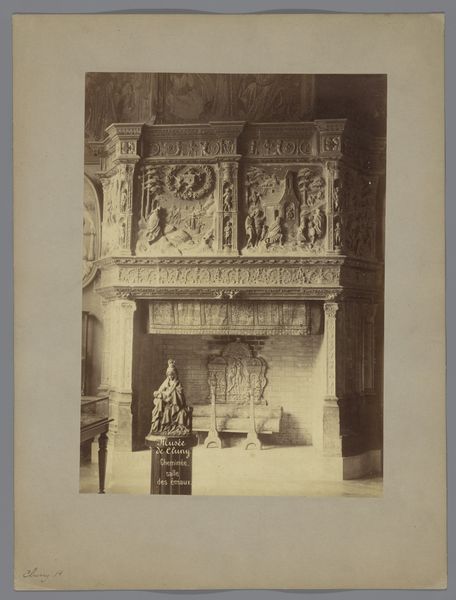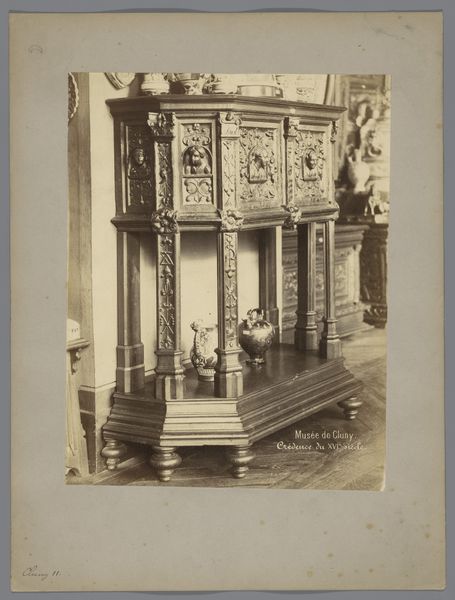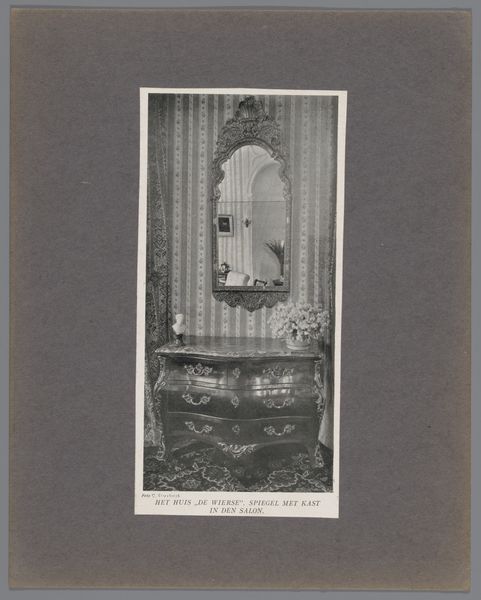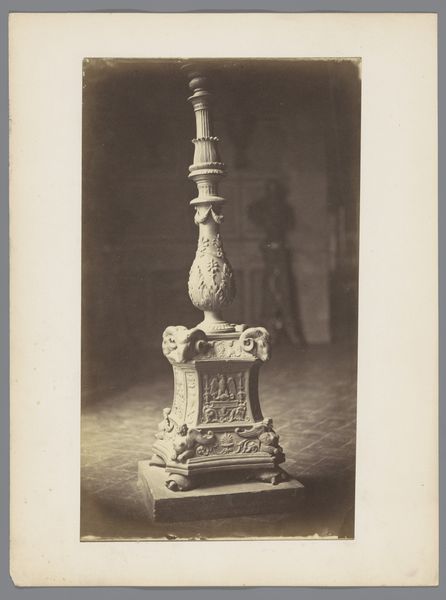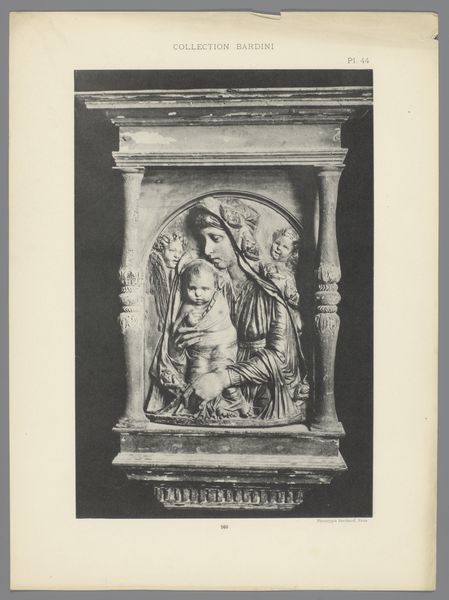
Altaar met sculptuur van een heilige, vermoedelijk Bonifatius, in de San Marco in Venetië before 1885
0:00
0:00
print, photography, sculpture, gelatin-silver-print, architecture
# print
#
photography
#
geometric
#
sculpture
#
gelatin-silver-print
#
architecture
#
realism
Dimensions: height 392 mm, width 310 mm
Copyright: Rijks Museum: Open Domain
Editor: So, here we have a photograph, likely a gelatin silver print, taken before 1885 by Carl Heinrich Jacobi. It depicts an altar with a sculpture, believed to be Boniface, inside the San Marco in Venice. The details are amazing, it has quite a solemn feel, capturing the grandeur of the church interior and the intricate sculptural work. How would you interpret this image, especially considering its historical context? Curator: This photograph gives us a fascinating glimpse into the late 19th century’s engagement with religious art and architecture. The photograph itself, as a medium, was still relatively young, and its application in documenting and disseminating images of important cultural sites was significant. Think about it – how else could people so easily access and study these artworks from afar? Editor: That’s a great point; the photograph democratized art viewing! But what about the choice to focus on this particular altar? Was there anything specific about Boniface or the San Marco that might have made it a popular subject at the time? Curator: Absolutely. San Marco held enormous symbolic power for Venice, representing its wealth, history, and connection to religious authority. Depicting Boniface specifically – if it is him – also speaks to a broader interest in figures who shaped the early Christian Church. It subtly reinforces notions of cultural and religious heritage being associated with Venice's own narrative of power and legitimacy. This image isn’t just about aesthetics; it’s about constructing a visual narrative. Editor: I see. So the photograph functions almost like a propaganda tool, subtly promoting Venice’s cultural significance through documentation of its sacred spaces. That gives me a totally different way of looking at it! Curator: Precisely. Consider, too, the photographer's choices—the composition, the light. They contribute to this carefully constructed message about Venice and its history. These are decisions that carry social and cultural weight. Editor: This has completely changed my perspective on the piece. I was so focused on the aesthetic qualities, I didn’t think about its possible public role. Thanks for sharing your insight. Curator: And thank you for noticing these critical elements within it. Thinking of a work’s greater meaning or place allows us to have a new appreciation for it.
Comments
No comments
Be the first to comment and join the conversation on the ultimate creative platform.

